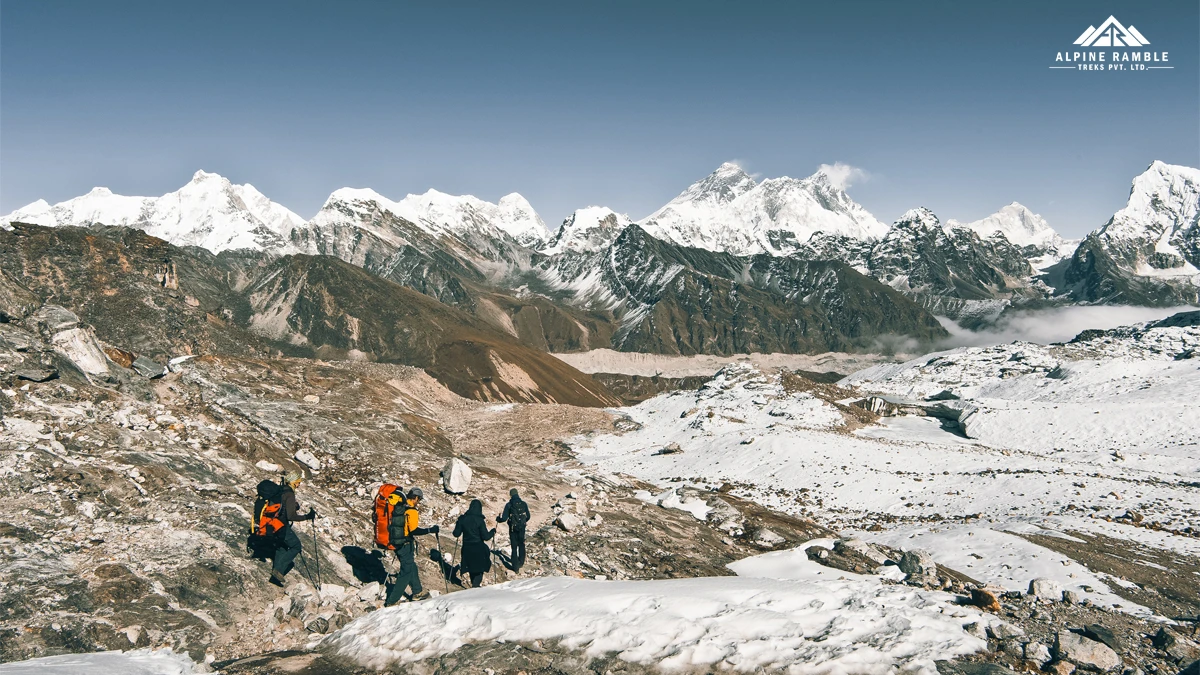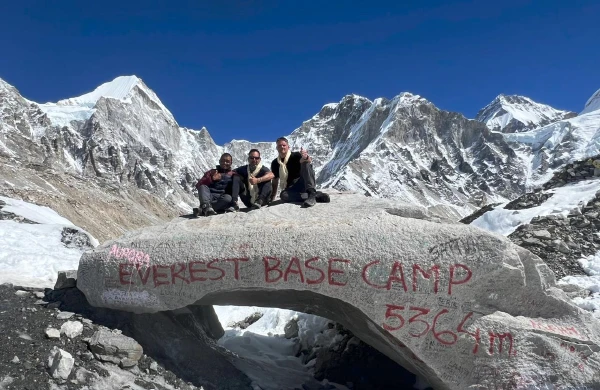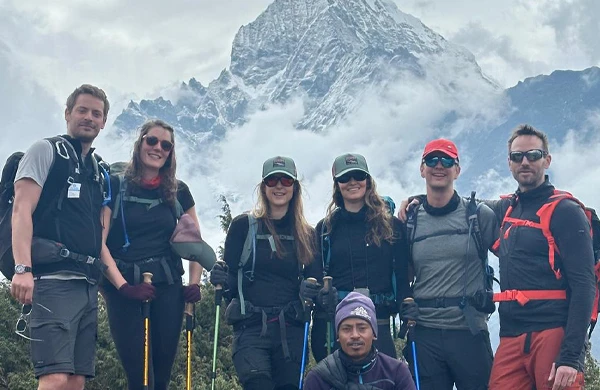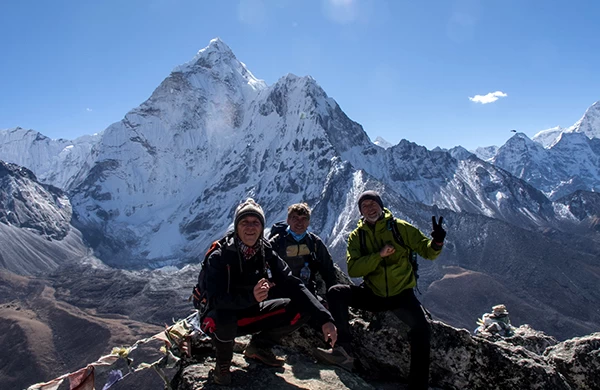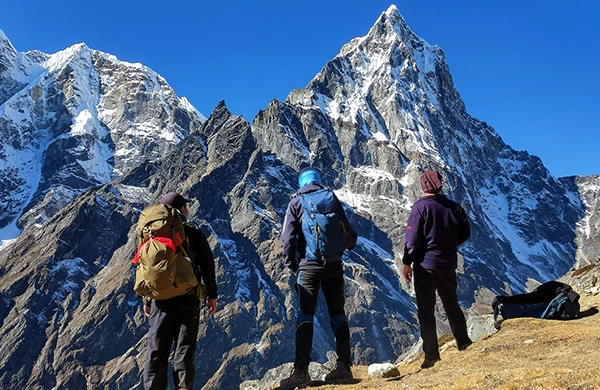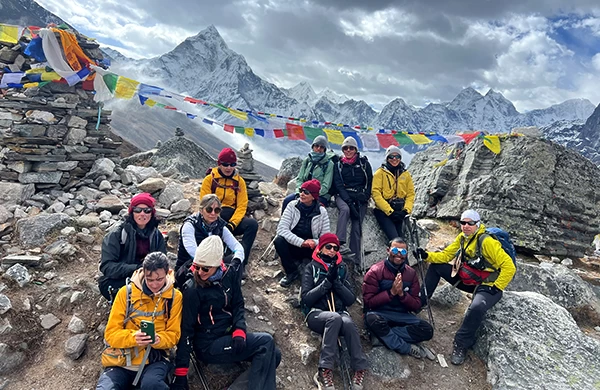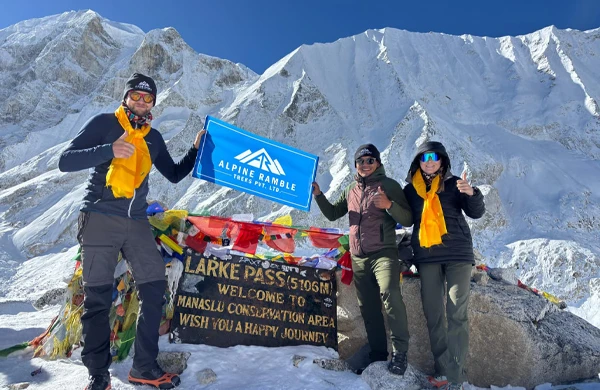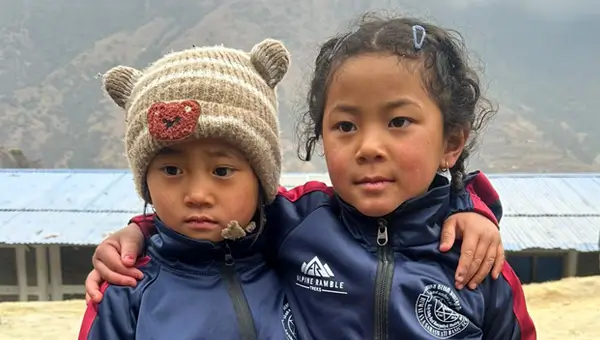The Everest Base Camp Trek is undoubtedly a standout in its category of trekking and mountaineering. People from all around the globe plan on coming to this adventurous place, which is home to the highest mountain in the world, Mount Everest. So, the best time to do the Everest Base Camp Trek is spring and autumn. And the month of September not only marks the beginning of autumn but also the beginning of the trekking season in Nepal, including EBC.
Everest Base Camp Trek in September
While there are definitely different adventure treks during the monsoon and winter, they may not be everyone’s cup of tea. The monsoon season comes with its share of rainy days, as does winter with snow and extreme cold, which many people want to avoid and rightfully so. But September is just the perfect time to do the Everest Base Camp Trek, as the monsoon will have ended and winter is still far away.
September brings forth the special charm of autumn, where the trekkers get to experience sensational views, bright and clear blue skies, moderate temperatures, and a bustling yet calming atmosphere. The monsoon season comes to an end, inviting the sunny rays that allow the snow in the mountain peaks to glisten as all the green leaves are in the process of turning into different shades of brown but not quite there yet.
There are many factors that come into play when deciding the perfect time to do the trek and on this blog, we will discuss why September is one of the best times to do the Everest Base Camp Trek.
What makes September worth choosing for your Everest Base Camp Trek?
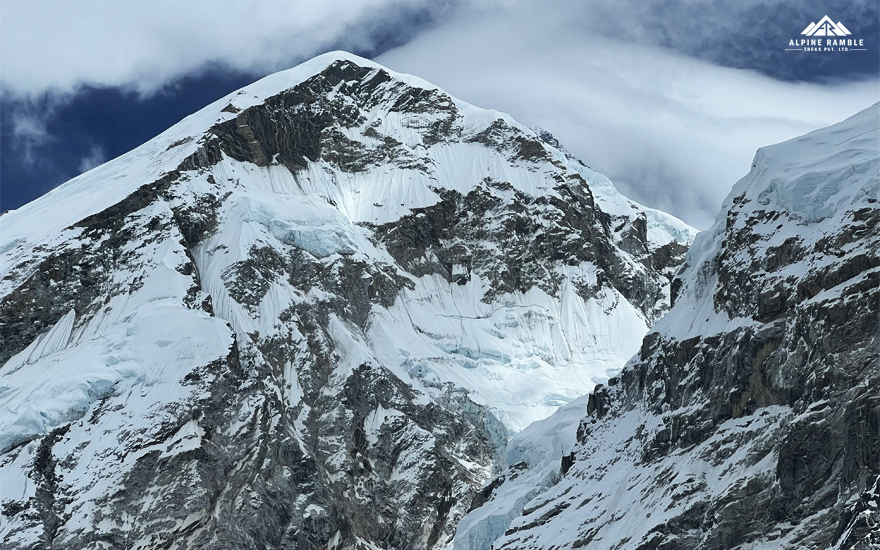
EBC is one of the best places to be in the entire country. From natural beauty to cultural heritage, it covers all. And especially in September, which is the absolute best time to do this trek and here’s why:
The Ultimate Pleasant Weather, Temperature, and Climate
The month of September is known to be the beginning of the autumn or fall season. With the monsoon coming to an end, the path clears of all the rain and mud, making the trekking experience very enjoyable. The grey clouded sky that constantly had rain pouring down will finally clear up, showcasing the sapphire blue with golden sun rays that make the sea of mountains visible.
But when it comes to temperature, no matter what season, it varies with elevation. The lower regions are less cold compared to the higher altitude regions. Mountains are cold all year round, with only a difference in intensity throughout the season. So, if we are to compare the difference between winter and autumn, of course autumn presents you with significantly lower temperatures than winter. And especially September, as it is still far away from the winter season, yet not far enough from the monsoon. This means the weather and climate of the Everest Base Camp in September is just right to do the trek.
Furthermore, the month can be divided into three parts: early, mid, and late September, and as the days progress, the weather becomes even more favorable. The very beginning of the month will still have the aftermath of the monsoon, with muddy trails and possible disrupted routes due to landslides. While in mid-September, the overall weather will significantly improve, and the routes will also be coming back into good shape. And by the end of September, everything will be back on track and possibly have the best weather and the flow of trekkers will increase by a considerable amount.
Weather and Temperature in Everest Base Camp Trek during September
Vibrant Sherpa Villages on the Trail
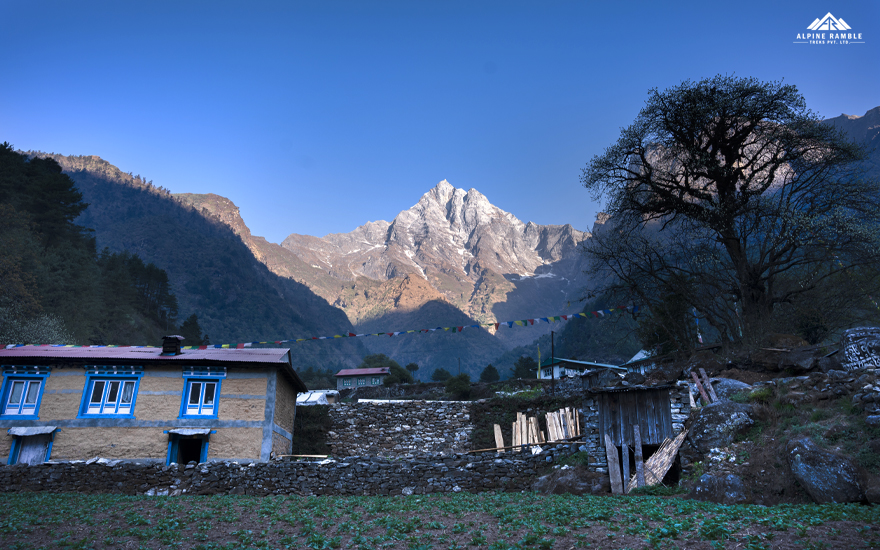
When it comes to trekking and mountaineering in Nepal, Sherpas are one of the first things that come to mind. They have made their solid reputation with their superhuman strength and the ability to climb mountains like no other. The route to the base camp passes through many Sherpa villages, namely Namche Bazaar and Khumjung Village.
You can see the cultural and religious influence of the Sherpa communities all along the trekking trail. From traditional houses, fluttering prayer flags, and prayer-inscribed mani walls to some of the oldest and biggest monasteries of the Khumbu region, like Tengboche and Pangboche Monastery.
The Sherpas are a distinct ethnic group in Nepal who centuries ago migrated from Tibet and inhabit the mountain region of Nepal, especially Khumbu. They have their own cultures and traditions following Tibetan Buddhism, and the trail to Everest Base Camp shows the Sherpa communities in their element.
Perfectly Encapsulated Tibetan Buddhism
The Khumbu region is a highly sacred place with spiritual connections that showcase the relation between the people, nature, mountains, and Tibetan Buddhism. The trails are filled with multicolored prayer flags, stone walls inscribed with prayers and most of all, monasteries and gompas. The Sherpa communities follow Tibetan Buddhism, with Guru Rinpoche, or Padmasambhava, being one of their main deities.
The route to the base camp passes through multiple monasteries, among which Tengboche Monastery is one of the most important. Tengboche Monastery is the largest monastery in the entire Khumbu region and is known for hosting the Mani Rimdu festival. The Pangboche monastery is one of the oldest monasteries in the Khumbu region and it stores what is said to be a “skull of a yeti,” which also has another set in the Khumjung monastery.
Not only in the tangible buildings of monasteries and gompas but also in the intangible prayers and divine power, the Everest Base Camp Trek is a deeply spiritual journey from start to end.
Majestic Mountain Views of Epic Proportions
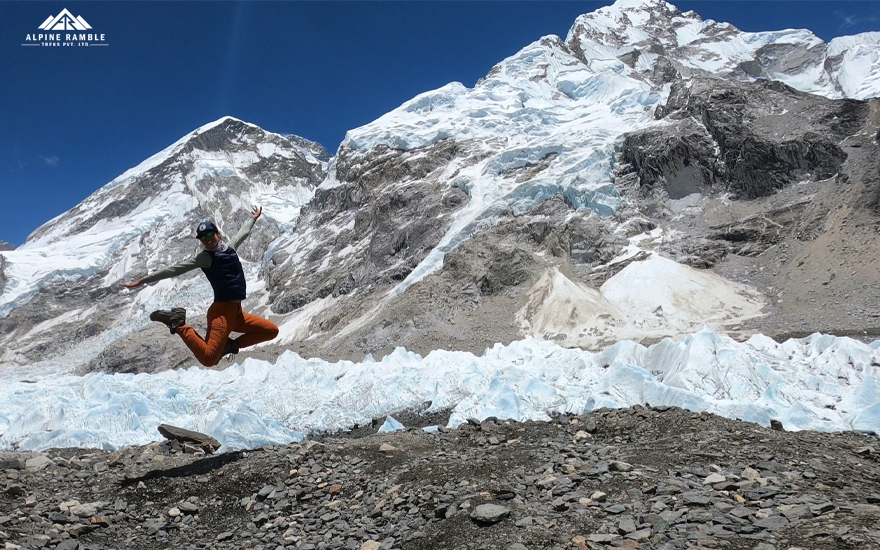
One thing all of Nepal is very popular for is being the land of mountains. The entire Himalayan range covers the country from east to west on the upper belt, where Mount Everest is a prominent landmark. And the Everest region is no exception, because whichever route you choose, you will be blessed with staggering views of the majestic snowcapped mountains. The Everest Base Camp Trek is the perfect destination to see magical mountains, especially in September, when the weather is just perfect.
From a scenic mountain flight to Lukla, the views only get better and better as you ascend higher. And by the time you reach the base camp itself, you will be surrounded by mountains in all four directions. Mount Everest (8,848.86 m), Lhotse (8,516 m), Nuptse (7,861 m), Ama Dablam (6,812 m), Pumori (7,165 m), Thamserku (6,623 m), Kangtega (6,782 m), Tawoche (6,495 m), Cho Oyu (8,188 m), Island Peak (Imja Tse) (6,189 m), and Kongde Ri (6,187 m) are just some of the well-known mountains you see during this trek. And there are still other lesser-known but beautiful peaks that can be seen throughout the journey.
Peaceful and Less Crowded
As September invites many trekkers to the Everest Base Camp, it will not be as busy and crowded as the months that follow. It is the perfect time to enjoy an adventurous trek to the base camp with fewer crowds and peaceful trails. So you can get the full experience of trekking in autumn while avoiding the infamous lines of trekkers and mountaineers on the trail. And even the tea houses will be much more peaceful and you can book your room without any trouble.
Food and Accommodation in Everest Base Camp in September
After the off-season of the monsoon ends, when many tea houses close, September means all the tea houses start to open for business. The food and accommodation services range from basic tea houses to 4-5 star hotels. But as you ascend higher, the facilities and amenities get more basic. The teahouses in the lower parts of the trail, such as Lukla, Phakding, and Namche Bazaar, offer some of the best teahouses on the entire trail.
Most tea houses have basic rooms with twin beds and common bathrooms. But you can also get a room with a private bathroom, which will cost more than the basic ones. Nevertheless, there will be plenty of rooms available with multiple teahouse options, and unlike in the mid-peak season, you do not need pre-booking. The teahouses do provide you with mattresses and blankets, but it might not be enough to keep you warm, so carrying a sleeping bag is highly recommended. The rooms are not big but are still cozy and comforting after a long day of hiking.
How to prepare for the Everest Base Camp Trek in September?
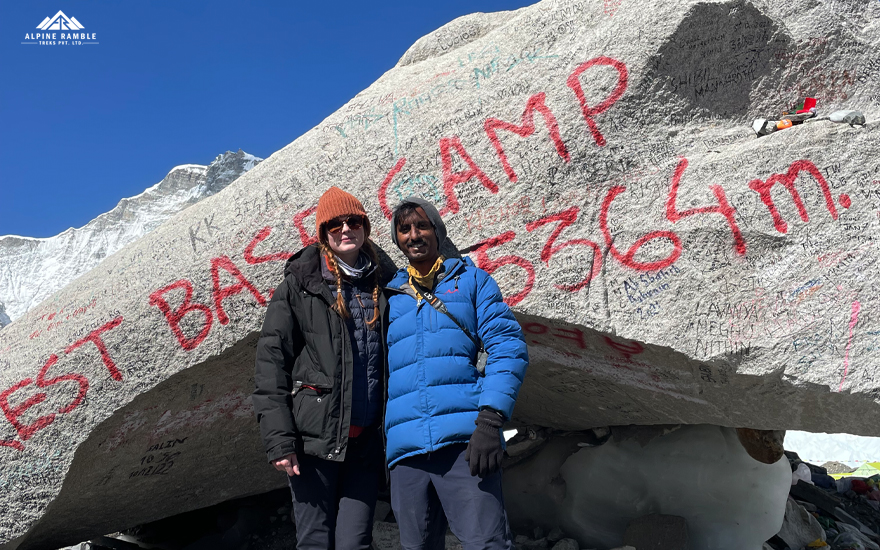
Being an outdoor adventure activity, the entire journey from start to finish is nothing short of thrilling yet peaceful. But without any preparation, the whole experience might be very bad, so here’s how to prepare for the Everest Base Camp Trek in September:
Make a Packing List
Even the smallest thing makes a huge difference when trekking amidst the Himalayas. It is not only cold but the facilities you so easily find in the cities become a luxury there. Therefore, you need to be very smart about what to pack for your trek to the Everest Base Camp in September. The first step is to divide your packing list into different aspects. For example:
- Clothing
- Footwear and Handwear
- Headwear
- Gear and Equipment
- Personal Items and Toiletries
- Entrance Permits and Other Important Documents
For clothing, it is important to pack in terms of layers. Layering is the key to staying warm and dry. Clothing such as thermal wear, fleece jackets, down jackets, and windbreakers are the crucial items for trekking. For footwear, trekking boots and slippers, and as for headwear, a sun hat and a woolen cap to keep warm. Meanwhile, other gear and equipment include trekking poles, water bottles, sleeping bags, and raincoats. Then, of course, come your personal belongings and toiletries, such as sunscreen, personal medications, and other items.
And another important thing to remember is to carry your permits and other documents, such as your passport. All these things are very crucial for your trek to go smoothly. For more detail on the packing list, you can read this blog.
Physical and Mental Preparation
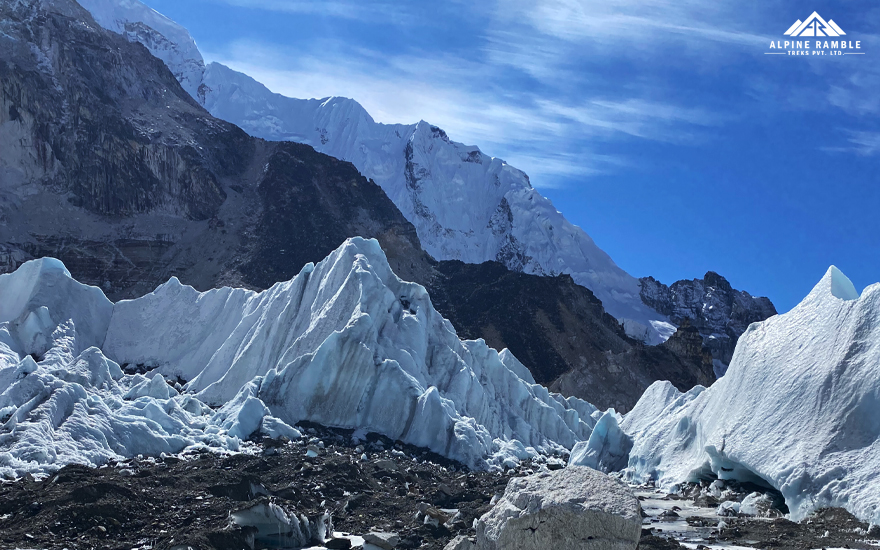
When it comes to preparing for an outdoor adventure activity, you need to have good physical and mental health. The Everest Base Camp Trek is labeled as a moderately challenging trek, so being in good physical shape and mentally strong will automatically increase your chances of a successful trek.
For this, doing physical exercises that mainly focus on strengthening your cardiovascular organs is important. Going on a hike and exercising at least one or two months prior to your EBC trek will help you increase your stamina. Meditation and doing good research on the destination will mentally prepare you for what to expect. Your mental and physical health will go hand in hand, because if you give up mentally, no matter how healthy you are, it won’t be good. So, train both your mind and your body if you are planning a trek this September to the Everest Base Camp.
Budget Planning
Budget planning is important when traveling. Having a cohesive plan on how much you will be spending on the trip will not only help you stay within your budget but also save you from unnecessary spending. Separating your budget as per food, accommodation, transportation, permits, and other areas will make your planning much easier. But of course, if you choose to go with a local company such as Alpine Ramble Trek, we will offer you the best package at the most affordable price, where everything except for your personal expenses will be covered.
Buffer Days on Itinerary
When traveling for longer days and especially to another country, there are always chances of delays and cancellations. Especially when it comes to the Everest Base Camp Trek flight to Lukla. Now, it is not the norm that the flight will always be delayed or cancelled, but being prepared for such scenarios will not create a dent in your happy moments. Having two or three extra days on your schedule will help to keep your itinerary flexible and should the flights get cancelled or any other problem arise, you will not have to worry about not having enough time to explore.
Altitude Sickness and Acclimatization
Avoiding altitude sickness is of great importance if you want to have a smooth trekking experience. And the best way to avoid it is to ascend gradually, eat proper meals, and always keep yourself hydrated. Your itinerary should include acclimatization days, where you stay at the same place an extra day to allow your body to get used to the low oxygen level and acclimatize.
While many resort to medications to avoid AMS, it is better if you naturally acclimatize instead. Rest, a good meal, and hydration are the key ways to keep your stamina. And in case of severe altitude sickness symptoms, the best cure is to descend down.
Conclusion
Deciding to embark on the Everest Base Camp Trek in September is one of the best decisions you will ever make. Not only does it promise some of the best views of the mountain landscapes, but it is also the perfect opportunity to escape the crowdedness that follows as the month passes. With the best possible weather and temperature and some residual dampness from the monsoon, you will be able to witness the lush greenery as well as the clear sapphire sky with the best views. It is the best possible time to trek to the roof of the world. And if you wish for other trekking destination options, you can also check out

